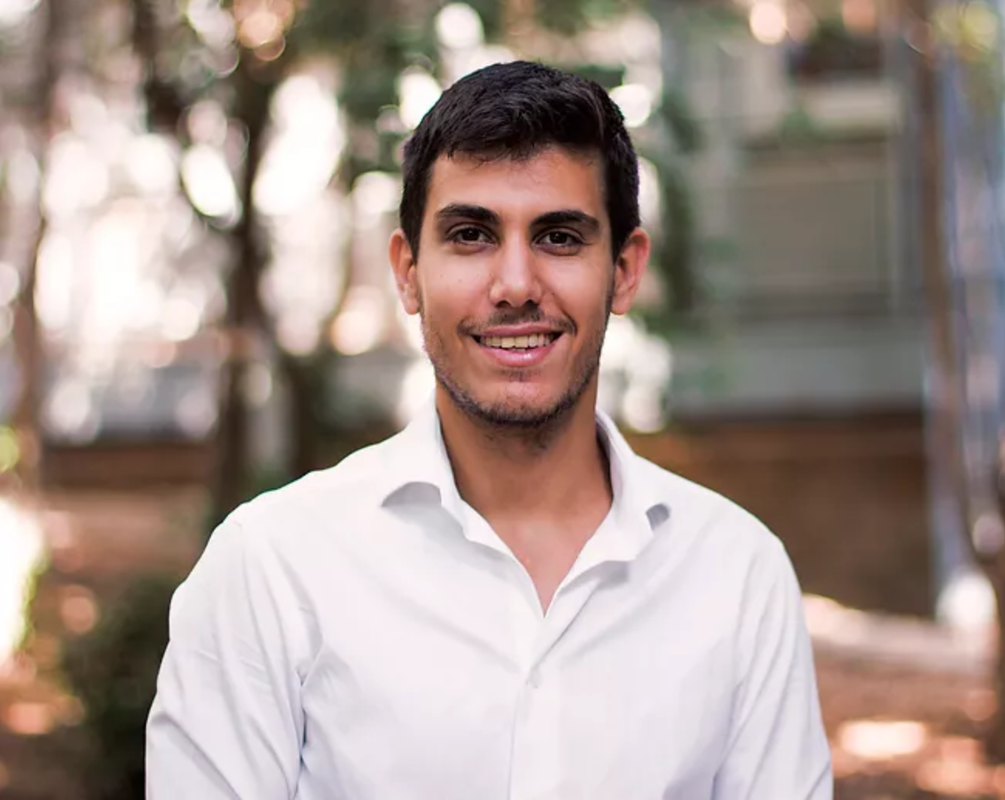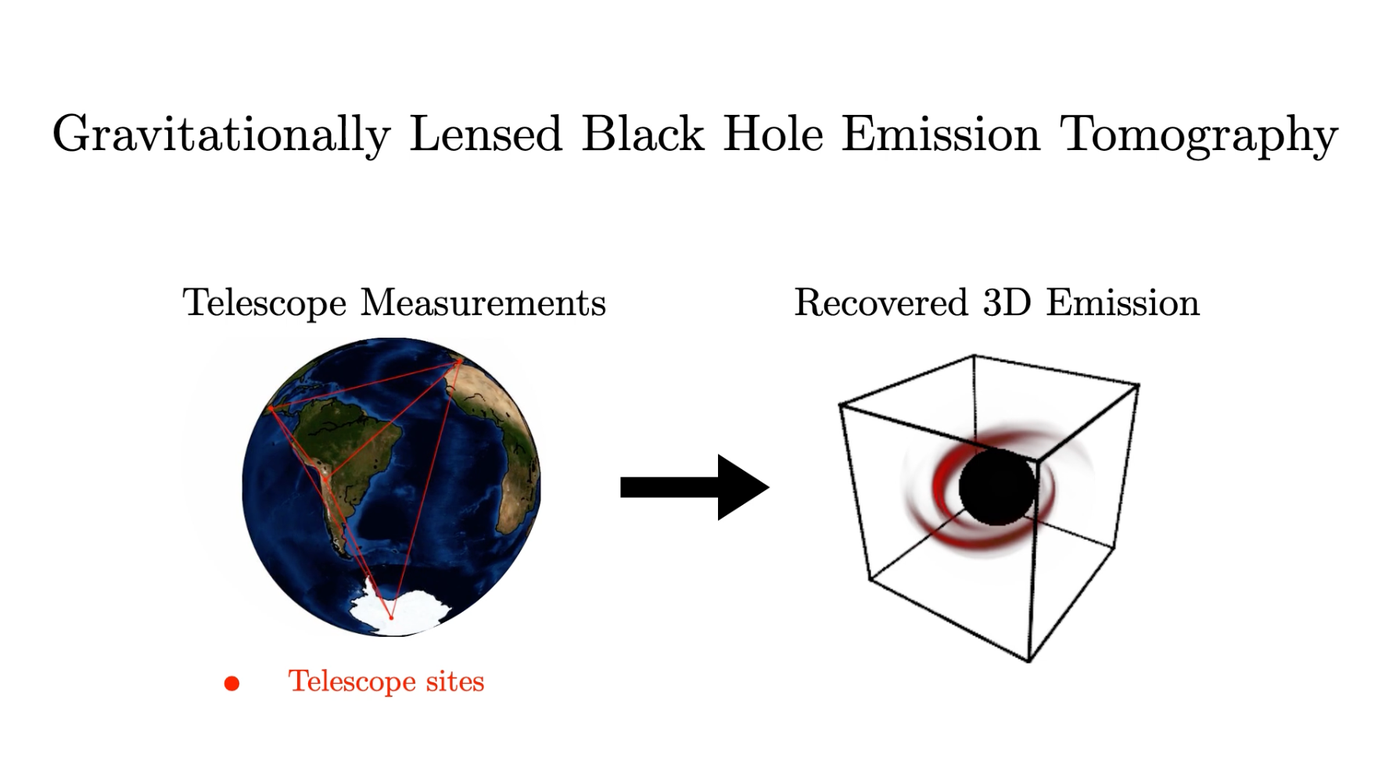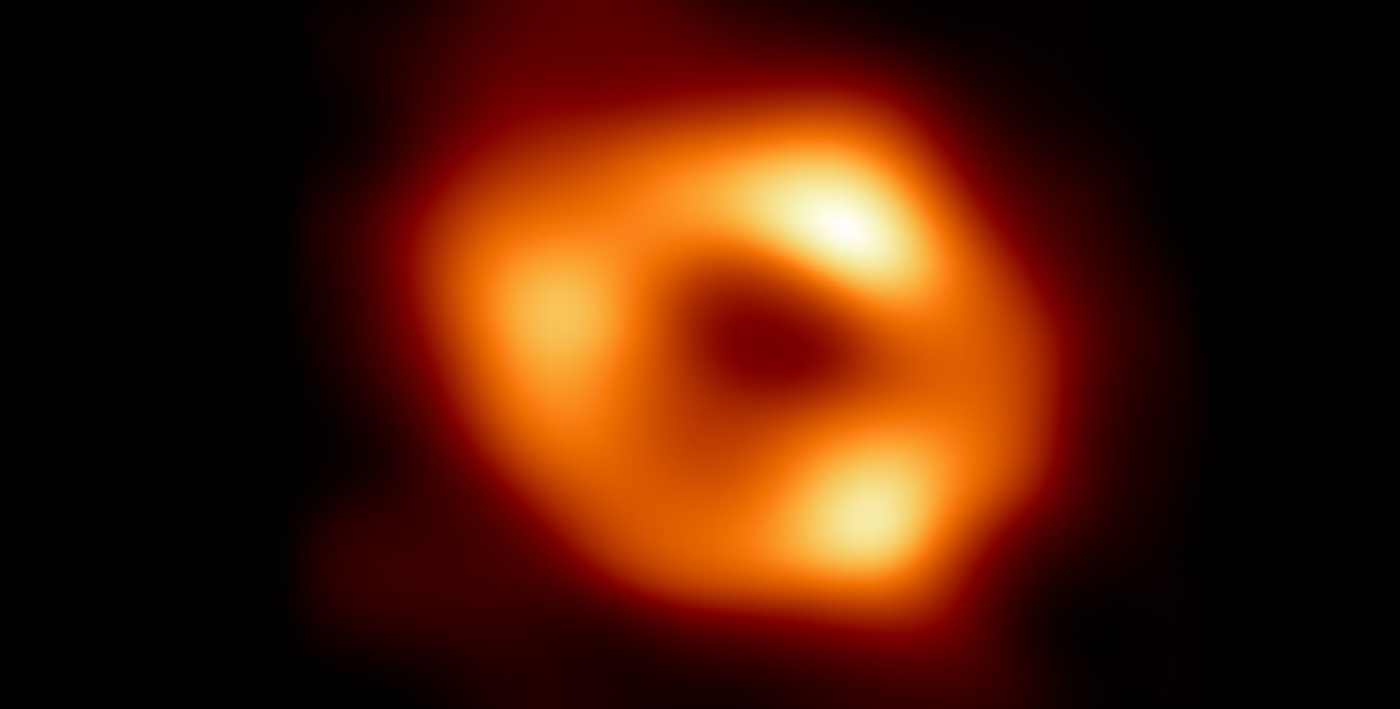What is the project?
The goal of this project is to develop a method to uncover the 3D structure of the glowing hot gas surrounding a black hole. The now-famous image of the M87* black hole’s shadow, observed using the Event Horizon Telescope (EHT), is a 2D projection of the surrounding gas gravitationally lensed around the black hole. But just as 2D images here on Earth can provide hints to the 3D structure of objects, 3D information is hidden within these 2D projections of the black hole. This new work aims to use expected gravitational physics in conjunction with 2D projections measured over time to recover what the surrounding gas looks like in 3D.
“If a regular image is worth a thousand words, think how valuable a 3D image could be”, says Aviad Levis, a postdoctoral scholar in Caltech’s Computing and Mathematical Sciences. Levis co-authored a paper detailing this work alongside Pratul Srinivasan, a Google Research scientist. The paper will be presented in June at the IEEE CVPR conference, and the research team also includes Katherine Bouman, Caltech professor of Computing and Mathematical Sciences, Andrew Chael, NASA Einstein Fellow at Princeton, and Ren Ng, UC Berkeley professor of Computer Science.
What are the possible applications for this research?
“This work sheds light on what we can achieve with algorithms that merge physics with modern machine learning, especially when applied to key science questions at the core of our understanding of the universe,” says Levis.
Why conduct this research now?
With the next generation Event Horizon Telescope (ngEHT) project gaining momentum, now is the perfect time to build upon recent trends in AI and showcase new theoretical imaging capabilities. The results from Levis and team's simulations can help shape the path for future instrumentation.
What are the challenges?
“We are looking to visualize a 3D object, but unlike a CT machine which relies on many viewpoints to get a 3D view of the inside of your body, we only have access to a single view from Earth,” says Levis. “Furthermore, the view from Earth is distorted because the light that we are seeing is pulled by the strong gravitational field of the black hole. It is as if we are looking through a funhouse mirror”, says Levis.
Another key challenge for Levis and team lies in validating their new 3D imaging model in increasingly complex and realistic tests. “While we have demonstrated a proof-of-concept, we can continue improving our method to be more resilient to the measurement errors and uncertainties we will face with real data from the telescope," says Levis.
What was most surprising about this research?
"Working in collaboration with colleagues from Caltech, Princeton, UC Berkeley, and Google, I was pleasantly surprised by the desire of all involved to learn as much as possible about the ins-and-outs of each other’s work," says Levis.
What are you most looking forward to with this research?
"Our hope for the future is that we can glimpse into the dynamic 3D environment around the black hole in the center of our galaxy," says Levis.
Learn more by visiting the project webpage.
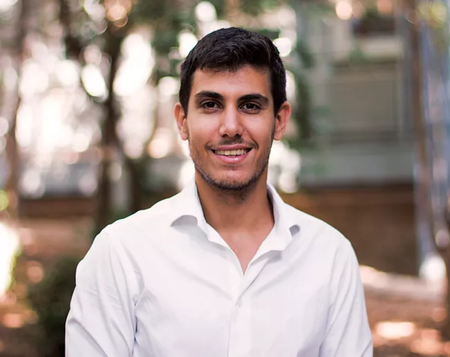 Aviad Levis
Aviad Levis
 Professor Katherine (Katie) Bouman
Professor Katherine (Katie) Bouman
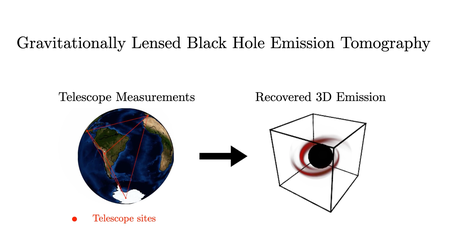 Recovered 3D Emission of a Black Hole
Recovered 3D Emission of a Black Hole
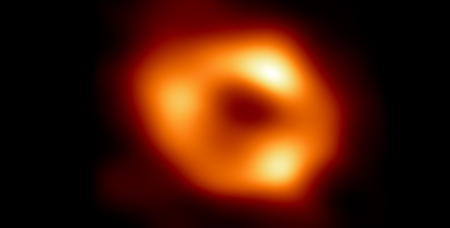 M87 Black Hole Image
M87 Black Hole Image

